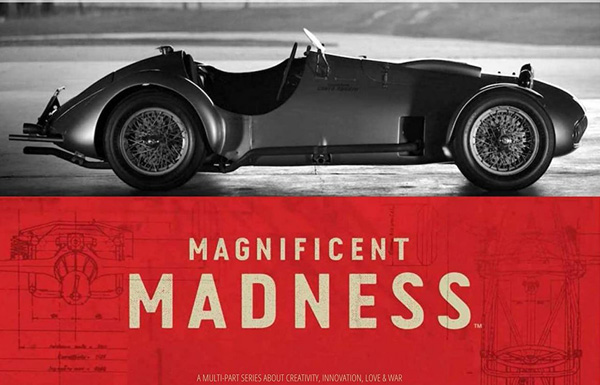
An upcoming four-part TV documentary series titled ‘Magnificent Madness’ covers the life of Tazio Nuvolari, one of Italy’s most famous racecar drivers, who rose to stardom in the 1930s. Ferdinand Porsche called him "the greatest driver of the past, the present and the future".
Sound Designer and Mixer Randy Bobo, founder of based video and audio post production facility Independent Studios in Wisconsin, USA, worked on audio post for the project, using a Blackmagic Design Fairlight Desktop Console. The studio has been designing sound and mixing documentaries with Fairlight for more than 25 years.
Missing Audio Track
“I started by cleaning up the dialogue and adding all the sounds needed to bring the story to life,” said Randy. “In this case, we had a lot of archival footage that was MOS – that is, it had no synchronous audio track. That meant I had to recreate sound for entire scenes that include, for example, 1930s vintage cars, WW I and WW II battle scenes, people working in factories and others.”
“I was able to import our existing sound effects library directly into DaVinci Resolve Studio and search for what I needed,” he said. “I used DaVinci Resolve Studio’s foley sampler to produce various foley effects by assigning sounds to a keyboard and creating the effects in real time. Elastic wave retiming also came in handy when timing certain sound effects to picture, as it allowed me to stretch a clip’s length in the timeline without changing pitch, which made retiming easier.

FlexBus Architecture
“Fairlight’s strength has always been in its editing. Having dynamics and equalisation – letting me adjust the volume of different frequency bands within the signal – on every channel was an advantage, and the new bussing protocol was impressive.”
FlexBus architecture uses up to 26 channel-wide multi-purpose buses instead of fixed buses. That way, tracks can be sent to buses, buses to tracks, and buses to buses in as many cascade layers deep as necessary to create large-scale sessions.
Randy also used the Fairlight Desktop Console, where having 12 faders at the ready was great support, along with pan automation, determining how much of the signal was sent to the left and right buses. “It set out all the features I needed in a compact console,” he said.
Mac Mini with the M1 Chip
Currently, Randy is running his entire DaVinci Resolve Studio system on a Mac mini with the M1 chip. “I can’t believe how well it worked extremely well,” he said. “I didn't treat it with kid gloves either, but instead used lots of plugins to reduce noise and reverb on the dialogue tracks, since some were recorded in very reverberant spaces, not surprisingly.”

As an audio and video post production house, Independent Studios also uses DaVinci Resolve Studio for grading and is in the process of upgrading one of its audio suites with a three bay Fairlight Advanced Console for mixing larger projects with higher track counts.
Randy commented, “First, I love Formula One, European cars and history, so this project was a pleasure and a treat to work on. The producers also gave me incredible freedom, so I was able to flex my creative muscles and have fun. Second, when you have a fully fledged system like DaVinci Resolve Studio and the accompanying Fairlight hardware console supporting your workflow, the possibilities increase. Fairlight’s capabilities show that the application truly understands audio post.” www.blackmagicdesign.com



